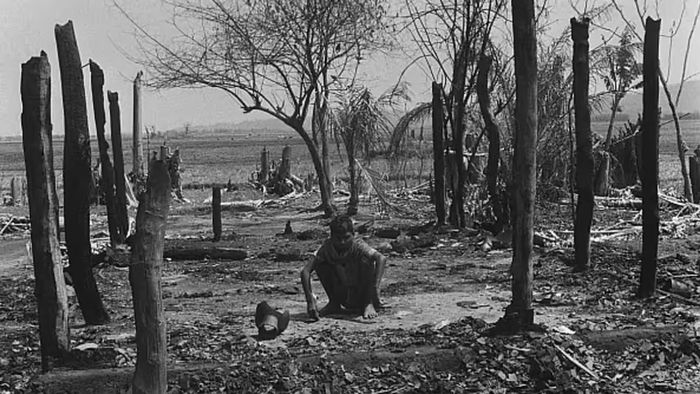Tewary commission says 1983 Assam violence had ‘no communal colour’, blames AASU–AGSP for unrest
The Tewary Commission, constituted to probe the large-scale violence that engulfed Assam in the first four months of 1983, has concluded that the unrest — which also witnessed the horrific Nellie massacre — did not carry any “communal colour”, even as it acknowledged that the Assamese people’s fear of being “numerically overwhelmed” was “not imaginary”.

- Nov 25, 2025,
- Updated Nov 25, 2025, 8:14 PM IST
The Tewary Commission, constituted to probe the large-scale violence that engulfed Assam in the first four months of 1983, has concluded that the unrest — which also witnessed the horrific Nellie massacre — did not carry any “communal colour”, even as it acknowledged that the Assamese people’s fear of being “numerically overwhelmed” was “not imaginary”.
The long-suppressed report, submitted in May 1984 and tabled in the Assembly in 1987, was finally circulated among MLAs on Tuesday, the opening day of the Winter Session.
The commission, headed by retired IAS officer T.P. Tewary, held the All Assam Students’ Union (AASU) and the Asom Gana Sangram Parishad (AGSP) “primarily responsible” for launching the anti-influx Assam Agitation and for its “consequences”. At the time, Assembly elections were held amid massive protests and very low voter turnout, culminating in a Congress victory and the end of nearly a year of President’s Rule.
The report, printed copies of which were earlier unavailable to legislators, recorded 8,019 incidents during the period under scrutiny. As many as 2,072 people were killed in group clashes, 235 in police firing, while over 2.26 lakh people were rendered homeless and nearly 2.48 lakh took refuge in relief camps. Except for Cachar and North Cachar Hills districts, the entire state was affected.
Also Read: Gaurav Gogoi questions “mastermind” behind Zubeen Garg’s murder, accuses Assam CM of voter import plot
The panel said there was “overwhelming evidence” that bandhs, property destruction and other unrest during the agitation were organised on a “pre-planned and extensive scale”. It noted that although AASU and AGSP mobilised mass support, it had also been built through “threats, intimidations, coercion and violence”, and the situation eventually spiralled “out of their control”, leading to immense human and material loss. The participation of a large number of government employees in the agitation further crippled law and order management, the report observed.
Rejecting attempts to portray the 1983 disturbances as communal, the commission said “all sections of society suffered” and that attributing a communal motive was “entirely unwarranted”. Simultaneously, it acknowledged that Assamese anxieties over demographic change were rooted in reality. It suggested that minorities should proactively identify infiltrators to help build trust, and flagged land occupation by migrants as one of the “greatest irritants”.
Among its recommendations, the panel proposed special land protections similar to those in Jammu & Kashmir, restricting the transfer of immovable property to non-Assamese. It advised that defining an “Assamese” for this purpose could reasonably reference the NRC or minimum domicile criteria. While tribal belts and blocks already enjoy legislative protection, the commission suggested extending similar safeguards to valley districts. It also stressed that detection of illegal migrants and eviction of encroachers were “inter-linked”, noting that eviction drives had been halted since 1979.
The report reaffirmed that the composite character of Assamese society was an asset, cautioning that communalism and sectional politics could erode this strength. The 1983 unrest remains one of the darkest chapters in Assam’s history, with the Nellie massacre of February 18 — in which more than 2,000 people, mostly Muslims, were slaughtered in a single night — standing as its most tragic symbol.